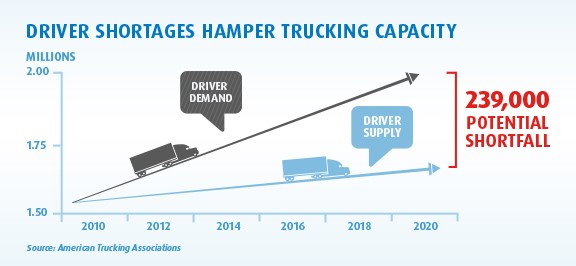XXXXXXXXXXXXXXXXXXXXXXXXXXXXXXXXXXXXXXXXXXXXXXXXXXXXXXXXXXXXXXXXXXXXXXXXXXXXXXXXXXXXXXXXXXXXXXXXXXXXXXXXXXXXXXXXXXXXXXXXXXXXXXXXXXXXXXXXXXXXXXXXXXXXXXXXXXXXXXXXXXXXXXXXXXXXXXXXXXXXXXXXXXXXXXXXXXXXXXXXXXXXXXXXXXXXXXXXxxxxxxxxxxxxxxxxxxxxxxxxxxxxxxxxxxxxxxxxxxxxxxxxxxxxxxxxxxxxxxxxxxxxxxxxxxxxxxxxxxxxxxxxxxxxxxxxxxxxxxxxxxxxxxxxxxxxxxxxxxxxxxxxxxxxxxxxxxxxxxxxxxxxxxxxxxxxxxxxxxxxxxxxxxxxxxxxxxxxxxxxxxx
IT might seem like a good time to be a long-haul trucker: More than ever, the American economy relies on hundreds of thousands of 18-wheelers to move goods across the country. But the industry is in crisis, with drivers leaving in droves because of low pay and poor working conditions.
A big part of the problem is that when it comes to long-haul trucking, the government’s focus has been almost entirely on road safety. That’s not a misplaced concern; highway accidents involving semis kill about 5,000 people per year. But it overlooks a critical concern: the well-being of the drivers themselves.
Credit Sophia Foster-Dimino
CBS NEWS October 18, 2016, 6:55 AM
Are older commercial truck drivers causing more danger on nation’s highways?
http://www.cbsnews.com/news/trucking-semi-industry-recruiting-retirees-commercial-drivers-accidents/
SOLUTION
501(c)(3) Nonprofit Organization
Focused on Business-Education Alignment & Talent Sustainability
Truck Driving, “Oldest & Most Important” 21st Century Career
Truck Driver = “A technology-enabled supply chain professional that steadily improves customer experience”
A Truck Driver’s Journey can begin by getting behind the wheel, and earning a scholarship to be used by themselves, or a family member for a college education. Getting behind the wheel is also the means for a truck driver to eliminate their existing student loan debt.
A CEO Association of Fortune 300 sized firms (MARC3) stood up a project that ran for over two years aimed at development of an approach that better aligned the interdependence of business requirements and education leading to self-sustainable U.S. based job creation. There was considerable time spent looking into the hiring practices of many of the top Fortune 500 firms. The effort identified multiple jobs that could best be addressed through a partnering of private corporations, public government, and academia (P3). This partnership would work together bringing a closer alignment of business requirements, and the education required to provide hiring candidates the necessary skills to address these specific needs. This project also highlighted the interdependence between an ever shrinking supply of non-tech jobs (e.g. commercial truck driver), and the successful evolution of the latest “Disruptive Technologies”. This is our immediate focus with a strategy for all involved to reduce cost by 50%, increase retention by 50%, and create a customized scalable offering that is self sustainable. Truck Driving is the oldest & most important 21st century career.
Talent Sustainability Practices
A study of people ages 22 to 27 by researchers at the New York Federal Reserve confirms some of the worst beliefs about the recession. People who finished college during the last few years were hit hard by the unusually cruel economy, much harder than people who had gone to college ahead of the recession.
During the worst point for jobs, around 2011, almost half of newly minted college graduates settled for jobs that didn’t require degrees, said Fed researchers Jaison Abel and Richard Deitz. The impact seems invisible when economists focus on only the nation’s unemployment rate. Most of the people who finished college after the recession got jobs, just not the type they imagined when they paid handsomely for college.
Employers know that a better educated workforce is good for employers, employees, communities and our nation. That is why employers are investing in the education, training and development of their workers and those in the communities in which they live. These investments help generate a sustainable workforce, where skilled workers who join the workforce have access to opportunities to keep their skills current and to develop capabilities that enable career and income advancement. Truck Driving can serve as a career stepping stone providing education to those who commit to driving as a means to secure their future goals of obtaining a degree without incurring student loan debt (student loan debt clock ). In lieu of a driver’s individual pursuit of education/degree,they can opt to bestow their earned education/scholarship to a family member (e.g. child, grandchild etc..). A driver can also opt to have their existing student loan debt paid back in lieu of the earned scholarship, or pay off the existing student loan debt of a family member. 
“Executive Mentorship” provides ongoing guidance to the driver to insure proper alignment of education/degree with requirements of jobs within the company, and/or industry they drive for.
What are we doing?
We are partnering with the government, academia, and corporations to recruit & train 100,000 commercial truck drivers each of the next ten years (one million in total) to fill the growing void, and address the ever increasing demand.
Where is the trucking industry today?
“Truck accidents are on the rise and driver fatigue is a leading cause,” said Senator Booker. “Truck drivers are working extremely long days to deliver the goods we depend on, but it should never be at the cost of their safety and that of other drivers”.
A shortage of qualified truck drivers is debilitating the trucking industry and has been an issue of concern for years. In the last decade, 2009 was the only year where an overall demand for truckers was low and capacity rates were met. This corresponded with the recession and was an anomaly within the shortage trend.
With an aging workforce, a void in younger driver sign up, an increase of retiring drivers, long periods away from home, few pay incentives, and stricter driving laws, membership in the trucking industry is low. The average age of a truck driver is 57, according to the Bureau of Labor Statistics. Additionally, a survey by the ATA found that 90% of carriers could not find enough drivers to meet the Department of Transportation’s (DOT) trucking criteria. Shipping rate escalation and thus inflation is the anticipated result of this truck driver shortage.
-
American Trucking Associations (ATA) advanced seasonally adjusted For-Hire Truck Tonnage Index decreased 0.5% in June, following a revised gain of 0.8%, during May. In June, the index equaled 131.1 (2000=100). The all-time high of 135.8 was reached in January 2015,
-
Freight being transported across the country ballooned to over 15 percent between May 2007 and May 2015,
-
Trucks hauled just under 10 billion tons of freight in 2014. Motor carriers collected $700.4 billion, or 80.3% of total revenue earned by all transport modes,
-
ATA projects freight volumes will increase by nearly 29% over the next 11 years with a 28.6% increase in freight tonnage and an increase in freight revenues of 74.5% to $1.52 trillion in 2026,
-
There is a growing shortage of commercial truck drivers including 35,000 to 40,000 [drivers] as of 2014, and shortage averaging 50,000 or more for 2015.



